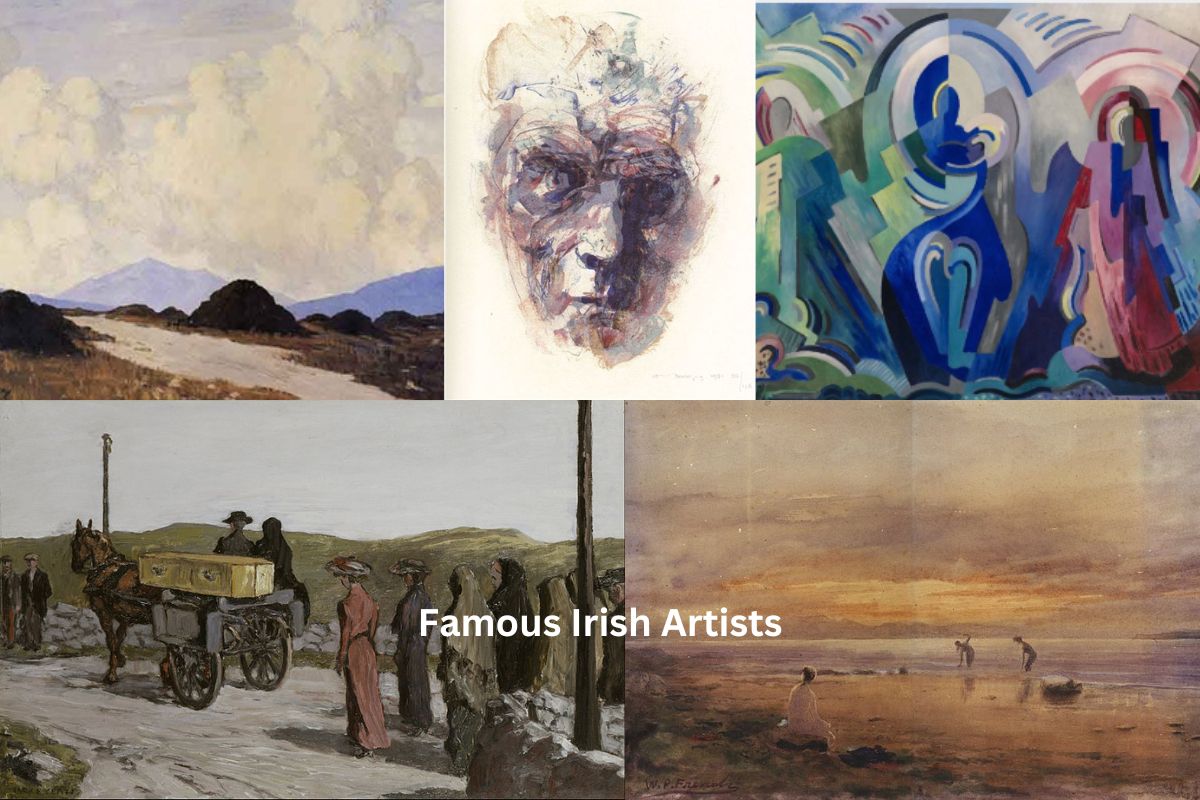Irish artists have played an important role in the history of art, contributing to various movements and styles throughout the centuries. From the vibrant colors and intricate designs of Celtic art to the contemporary works of today, Irish painters have left their mark on the art world.
One of the most notable contributions of Irish painters is the creation of the Celtic art style. This ancient art form is characterized by intricate patterns and designs, often inspired by nature and mythology.
Celtic art can be seen in many forms, including illuminated manuscripts, metalwork, and stone carvings.
During the 19th and 20th centuries, Irish painters became increasingly influential on the international art scene. Many of these artists were part of the Irish literary revival movement, which aimed to promote and preserve Irish culture and traditions.
These painters often depicted scenes from everyday life in Ireland, using bold colors and expressive brushstrokes to convey the emotions and struggles of the people.
Irish painters have also contributed to various art movements, such as Expressionism, Surrealism, and Abstract Expressionism.
Some Irish artists, such as Francis Bacon and Louis le Brocquy, have become celebrated figures in the international art world, creating works that challenge and inspire viewers.
Famous Irish Artists
1. Louis le Brocquy
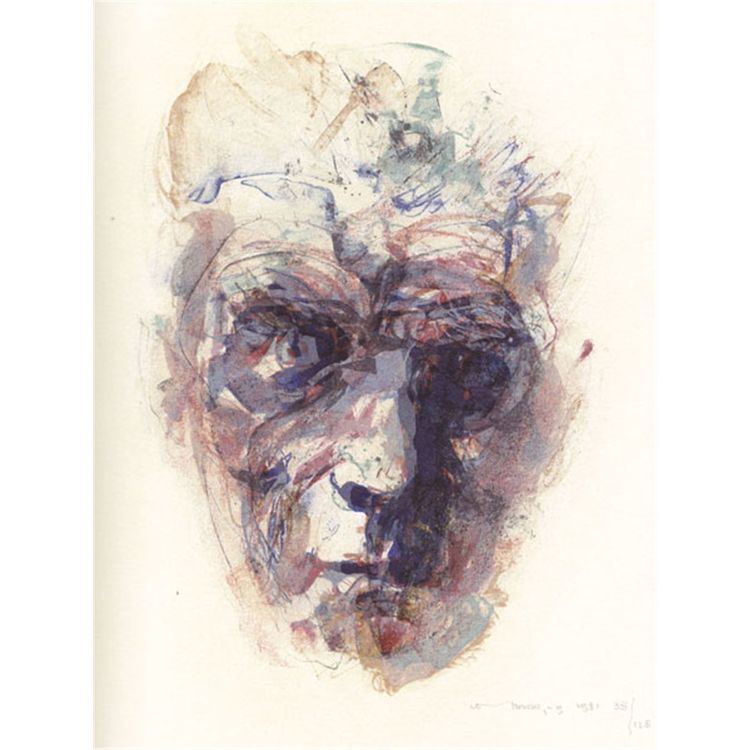
Louis le Brocquy (1916-2012) was an Irish painter who is widely regarded as one of the most important artists of the 20th century. Born in Dublin, he studied at the Dublin Metropolitan School of Art and later at the Chelsea School of Art in London.
Le Brocquy was known for his unique style, which blended traditional and modern techniques to create works that were both abstract and highly detailed.
He was particularly interested in the human face, and many of his paintings were portraits of famous figures, including writers Samuel Beckett and W.B. Yeats, and fellow artist Francis Bacon.
Le Brocquy’s work was heavily influenced by the Celtic art tradition, and he often used abstract forms and muted colors to create intricate and detailed works.
He also experimented with a range of media, including oils, watercolors, and gouache, as well as printmaking techniques such as etching and lithography.
Throughout his career, Le Brocquy received numerous awards and honors for his contributions to the art world.
In 1995, he became the first living artist to have his work featured on an Irish coin, and in 2007, he was awarded the Freedom of the City of Dublin. His paintings continue to be highly sought after by collectors and art enthusiasts around the world.
2. Jack Butler Yeats
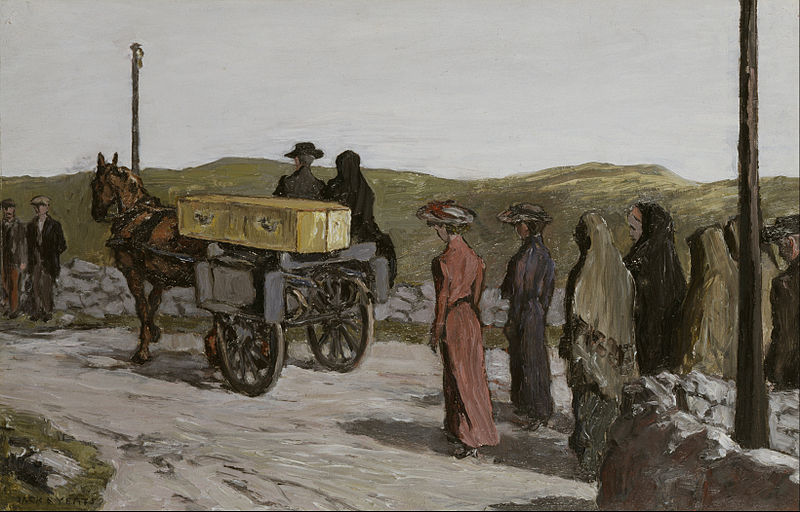
Jack Butler Yeats (1871-1957) was an Irish painter and illustrator, who is widely regarded as one of Ireland’s most important artists. Born in London to an Irish family, he spent much of his childhood in Sligo, on the west coast of Ireland, which would become a major source of inspiration for his work.
Yeats was primarily a painter of landscapes, seascapes, and scenes from everyday life, often depicting the rugged and wild beauty of the Irish countryside. His paintings were characterized by bold colors, expressive brushstrokes, and a sense of movement and energy.
Yeats was also heavily involved in the Irish literary revival movement, which aimed to promote and preserve Irish culture and traditions. He was a friend and collaborator of many of the leading writers and intellectuals of his time, including his brother, the poet W.B. Yeats, and the playwright John Millington Synge.
Throughout his career, Yeats received numerous awards and honors for his contributions to the art world, including the Order of Merit from the Irish government in 1948. His paintings continue to be highly sought after by collectors and art enthusiasts around the world, and his legacy as one of Ireland’s greatest artists remains strong today.
3. Paul Henry
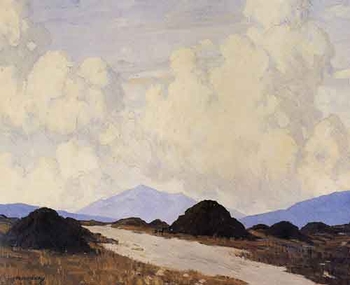
Paul Henry (1877-1958) was an Irish painter who is known for his depictions of the Irish landscape. Born in Belfast, he studied at the Government School of Art in Dublin and later in Paris.
Henry’s work was heavily influenced by the rugged beauty of the west of Ireland, particularly the Connemara region. He often depicted scenes of rural life, such as farmers working the fields, fishermen on the shore, and animals grazing in the countryside. His paintings were characterized by their simple, yet powerful compositions, and their use of muted colors and soft brushstrokes.
Throughout his career, Henry exhibited his work in Ireland, England, and the United States, and his paintings were well-received by critics and collectors alike. In 1934, he was elected a member of the Royal Hibernian Academy, and in 1951, he was awarded the gold medal for painting at the An Tóstal festival in Dublin.
Today, Paul Henry is considered one of Ireland’s most important artists, and his paintings continue to be highly sought after by collectors and art enthusiasts around the world. His legacy as a master of landscape painting, and as a chronicler of rural life in Ireland, remains strong today.
4. Percy French
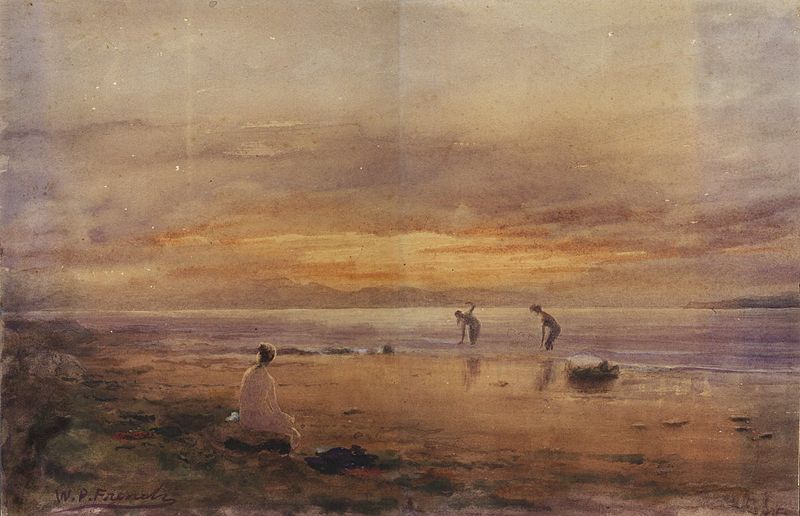
Percy French (1854-1920) was an Irish artist, songwriter, and entertainer, best known for his humorous songs and sketches that poked fun at Irish life and society.
He was born in County Roscommon and trained as a civil engineer, but eventually gave up his engineering career to pursue his passion for music and comedy.
French’s songs and sketches were characterized by their witty lyrics, catchy tunes, and clever wordplay. Many of his songs, such as “The Mountains of Mourne,” “Phil the Fluter’s Ball,” and “Are Ye Right There Michael,” are still popular in Ireland and around the world today.
In addition to his musical career, French was also a talented watercolor artist, known for his paintings of Irish landscapes and seascapes. His paintings were often exhibited alongside his songs and sketches, and he continued to paint throughout his life.
Despite his success as an entertainer and artist, French experienced financial difficulties throughout his career and was forced to sell his paintings to support himself. He died in 1920, and his legacy as one of Ireland’s most beloved entertainers and artists continues to this day.
5. Mainie Jellett
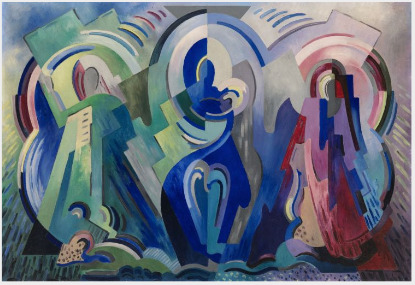
Mainie Jellett (1897-1944) was an Irish artist and one of the leading figures of the Irish modernist movement. She was born in Dublin and studied at the Dublin Metropolitan School of Art and later in Paris with the cubist painter André Lhote.
Jellett’s work was heavily influenced by cubism and other modernist art movements, and she was particularly interested in the relationship between form, color, and space. Her paintings were characterized by their bold, geometric shapes, bright colors, and abstract compositions.
In addition to her paintings, Jellett was also a pioneer in the field of stained glass design. She created several stained glass windows for churches in Ireland, including the Church of the Holy Spirit in Dublin.
Jellett was a member of the Modern Art Society in Dublin and exhibited her work in Ireland, England, and France. Despite her contributions to the art world, Jellett’s work was often overlooked during her lifetime, and she struggled to gain recognition for her innovative and groundbreaking work.
Today, however, she is recognized as one of Ireland’s most important modernist artists, and her paintings and stained glass designs continue to inspire and influence artists around the world.
6. Gerard Dillon
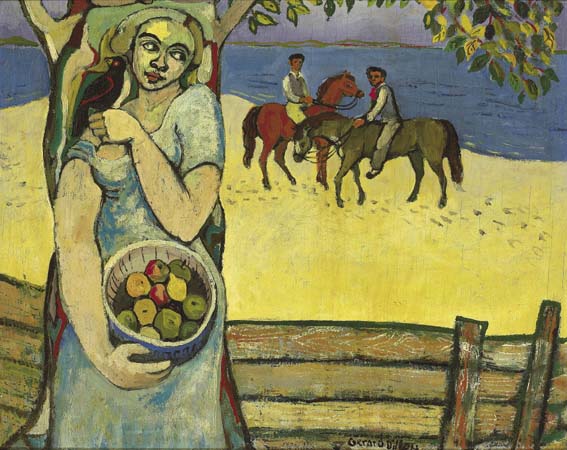
Gerard Dillon (1916-1971) was an Irish painter who is known for his vibrant and colorful depictions of life in Ireland. Born in Belfast, he studied at the Belfast College of Art and later at the Glasgow School of Art.
Dillon’s work was heavily influenced by the Irish landscape, particularly the west coast of Ireland, which he visited frequently throughout his life. His paintings were characterized by their bright colors, bold brushstrokes, and energetic compositions, often depicting scenes of everyday life, such as marketplaces, festivals, and family gatherings.
In addition to his paintings, Dillon was also a skilled printmaker, and he created several etchings and lithographs throughout his career. He exhibited his work in Ireland, England, and the United States, and his paintings were well-received by critics and collectors alike.
Dillon was also known for his eccentric personality and bohemian lifestyle, which often led to financial difficulties throughout his life.
He died in 1971 at the age of 54, but his legacy as one of Ireland’s most important and innovative painters remains strong today. His paintings continue to be highly sought after by collectors and art enthusiasts around the world.
7. William Orpen
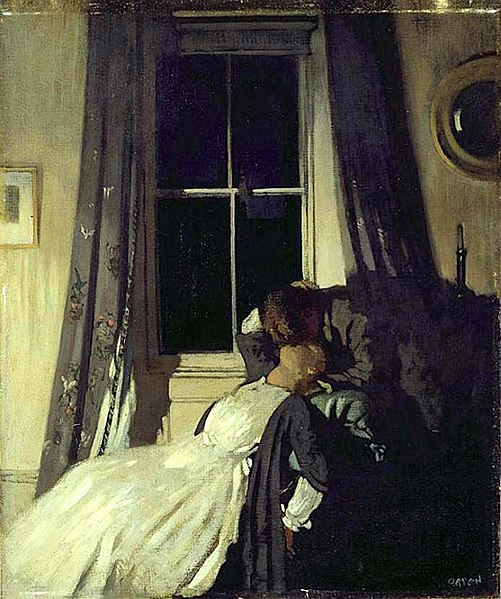
Sir William Orpen (1878-1931) was an Irish painter and portraitist, known for his depictions of the high society of his time. Born in Dublin, he studied at the Dublin Metropolitan School of Art and later in London and Paris.
Orpen’s work was heavily influenced by the Impressionist and Post-Impressionist movements, and he was particularly interested in portraiture. His paintings were characterized by their precise and detailed brushwork, and their ability to capture the personality and character of his subjects.
Throughout his career, Orpen painted many famous figures of his time, including politicians, military leaders, and members of the royal family. He was particularly well-known for his portraits of soldiers during World War I, and he was appointed an official war artist by the British government in 1917.
In addition to his painting, Orpen was also a skilled illustrator and caricaturist. He worked for many of the leading newspapers and magazines of his time, and his cartoons and drawings were known for their wit and humor.
Today, William Orpen is recognized as one of the most important portraitists of the early 20th century. His paintings are held in collections around the world, and his legacy as a master of portraiture and a chronicler of his time remains strong today.
8. Norah McGuinness
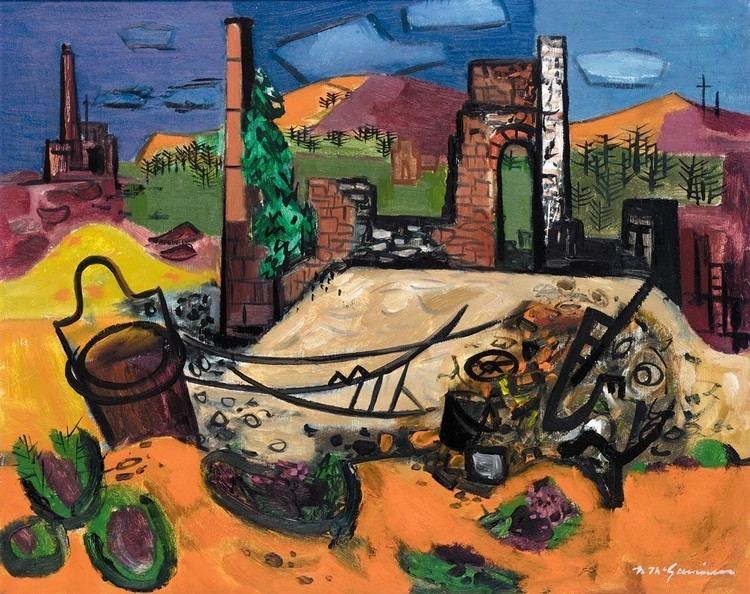
Norah McGuinness (1901-1980) was an Irish artist, illustrator, and designer, known for her colorful and abstract compositions. Born in County Londonderry, she studied at the Dublin Metropolitan School of Art and later in Paris and London.
McGuinness’s work was heavily influenced by the modernist art movements of her time, particularly Cubism and Surrealism. She was particularly interested in the relationship between color and form, and her paintings were characterized by their bold shapes, vibrant colors, and abstract compositions.
In addition to her painting, McGuinness was also a skilled illustrator and designer, and she worked on several notable projects throughout her career. She designed sets for the Abbey Theatre in Dublin, created murals for the Irish pavilion at the 1939 World’s Fair in New York, and illustrated several books, including a collection of Irish folktales.
McGuinness exhibited her work in Ireland, England, and the United States, and her paintings and illustrations were well-received by critics and collectors alike. She was also an important figure in the Irish art world, and she served as a member of the board of the National Gallery of Ireland.
Today, Norah McGuinness is recognized as one of Ireland’s most important modernist artists. Her paintings continue to be highly sought after by collectors and art enthusiasts around the world, and her legacy as a pioneering artist and designer remains strong today.
9. Roderic O’Conor
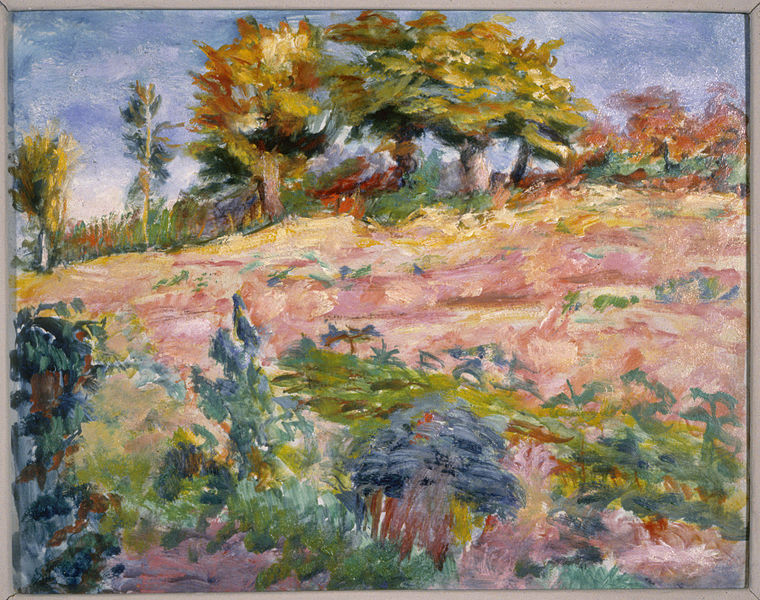
Roderic O’Conor (1860-1940) was an Irish painter who is known for his contributions to the Post-Impressionist movement. Born in County Roscommon, he studied at the Metropolitan School of Art in Dublin and later in Paris with the renowned painter, Carolus-Duran.
O’Conor’s work was heavily influenced by the Post-Impressionist artists of his time, particularly Vincent van Gogh and Paul Gauguin. He was particularly interested in the use of bold colors and expressive brushstrokes to create emotive and powerful paintings.
Throughout his career, O’Conor painted many landscapes, portraits, and still lifes, and his work was characterized by its vibrant colors and dynamic compositions. He exhibited his work in Ireland, England, and France, and his paintings were well-received by critics and collectors alike.
In addition to his painting, O’Conor was also a skilled printmaker, and he created several etchings and lithographs throughout his career. He spent much of his later years in the south of France, where he continued to paint until his death in 1940.
Today, Roderic O’Conor is recognized as one of Ireland’s most important modernist painters. His paintings continue to be highly sought after by collectors and art enthusiasts around the world, and his legacy as a master of Post-Impressionism remains strong today.
10. Francis Bacon
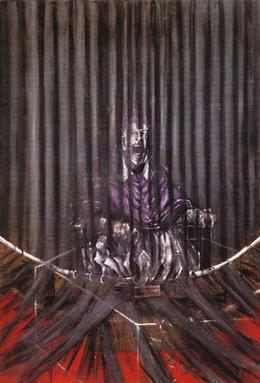
Francis Bacon (1909-1992) was an Irish-born artist who is considered one of the most important figures of 20th century art. He was born in Dublin but spent most of his adult life in England.
Bacon’s work was characterized by its intense and often disturbing images of the human figure, distorted and fragmented to reflect his deep psychological explorations of the human condition. His art was often shocking and challenging, exploring themes of violence, sexuality, and mortality. Bacon was known for his bold use of color and his innovative techniques, such as his technique of applying paint with a brush and then scraping it away.
Bacon’s career was marked by numerous prestigious awards and accolades, including a retrospective at the Tate Gallery in London and exhibitions at the Metropolitan Museum of Art in New York and the Pompidou Centre in Paris. He was also the subject of several biographies and documentaries.
Today, Francis Bacon is recognized as one of the most important and influential artists of the 20th century, and his legacy continues to inspire and challenge artists around the world. His paintings are held in collections in major museums worldwide, and his influence can be seen in the work of many contemporary artists.

